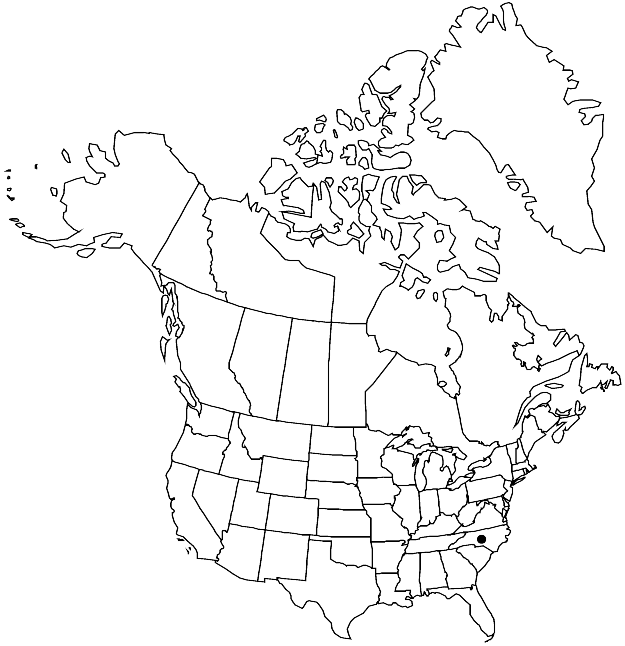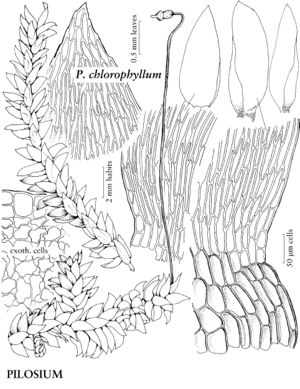Pilosium chlorophyllum
in H. G. A. Engler et al., Nat. Pflanzenfam. ed. 2, 11: 399. 1925.
Stems 6 cm, 2–4 mm wide across leafy stem. Leaves dorsal 1.3–1.6 × 0.6–0.9 mm, alar cells few, weakly differentiated, 12–24 × 9–12 µm, walls not porose; lateral 1.5–2 × 0.6–1 mm, costa extending short distance beyond base, alar cells many, strongly differentiated, 24–89 × 14–28 µm, walls porose; medial laminal cells 89–146 × 7–12 µm. Perichaetia with leaves deeply erose. Seta 1.5–1.8 cm. Capsule 0.8–1.2 mm; operculum 0.4–0.6 mm.
Phenology: Capsules mature winter.
Habitat: Forested sheltered gorges, rotten logs, exposed tree roots
Elevation: moderate elevations (600-800 m)
Distribution

N.C., Mexico (Quintana Roo), West Indies, Central America, n South America.
Discussion
Pilosium chlorophyllum is rarely confused with other species in Stereophyllaceae. The species is distinctive because of its glossy, complanate-foliate plants, and dimorphic leaves, the dorsal ones symmetric and oblong-ovate, with neither a costa nor a distinctive alar region of differentiated cells, the lateral ones cultriform and oblong-lanceolate, with a short, weak costa scarcely reaching 1/3 leaf length, and a large area of enlarged, pigmented alar cells on one side of the costa. The cernuous, short-cylindric capsules have collenchymatous exothecial cells and the spores, 7–9 µm, are smaller than in other members of the family.
Selected References
None.
